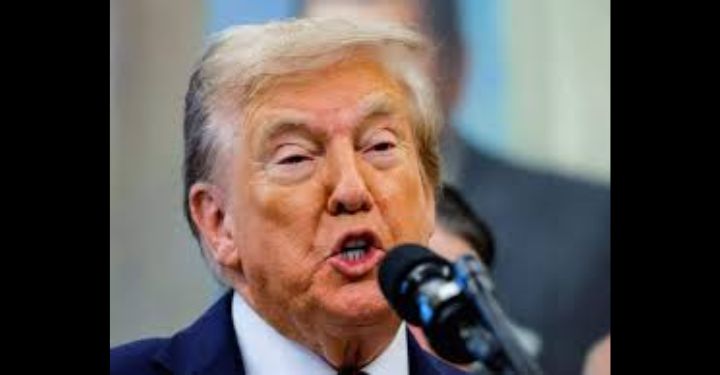
A group of 21 influential U.S. lawmakers has issued a sharp warning to former President Donald Trump, urging him to reconsider his administration’s aggressive tariff strategy against India. In a bipartisan letter released earlier this week, members of Congress expressed concern that the escalating trade dispute could severely damage the U.S.–India strategic relationship—one of Washington’s most vital partnerships in the Indo-Pacific.
The lawmakers argue that continued economic aggression may drive India toward closer alignment with China and Russia, undermining decades of diplomatic progress and weakening the United States’ position in the region.
The Tariff Standoff
The trade conflict began when the Trump administration imposed new tariffs on a wide range of Indian exports, citing unfair trade practices and India’s continued ties with Russia. Initial duties of 25% were applied on goods such as textiles, leather, and electronics. The situation escalated when a second wave of tariffs—also 25%—was introduced in response to India’s refusal to reduce oil imports from Russia and its defense contracts with Moscow.
These measures effectively doubled tariffs on critical sectors, affecting billions in trade and igniting concern across industries in both countries. Indian officials labeled the moves “disproportionate and politically motivated,” while New Delhi’s business community warned of job losses and reduced competitiveness in U.S. markets.
Congressional Alarm: Strategic Interests at Stake
The joint letter from lawmakers—comprising both Republicans and Democrats—emphasized that the United States and India share a relationship that transcends trade. The two democracies have collaborated on security, climate change, counterterrorism, and technology. The lawmakers warned that if the administration continues to penalize India over its independent foreign policy decisions, the damage could extend far beyond economics.
“India is not just a trading partner—it is a democratic ally in a volatile region,” the letter read. “By escalating tariffs, we risk alienating a nation that plays a central role in countering China’s growing influence in Asia.”
The members of Congress also expressed concern that India may respond by limiting U.S. access to defense contracts, high-tech markets, and supply chain partnerships—moves that would harm American industry and strategic interests.
The Geopolitical Consequences
Experts warn that the tariff escalation could lead to a diplomatic pivot in New Delhi. Although India has historically balanced its ties between East and West, continued economic pressure from the United States could accelerate its growing cooperation with China and Russia.
In recent months, India has engaged in multiple rounds of dialogue with Chinese and Russian officials, signaling a desire to diversify its strategic options. While India has stopped short of forming formal alliances, it has increased joint military exercises with Russia and participated in BRICS initiatives alongside China.
“This is a dangerous moment,” said Lisa Curtis, a former National Security Council official. “If the U.S. continues treating India as an adversary in trade, it risks losing influence to China—precisely what Washington should be trying to avoid.”
Indian Response: Holding the Line
India’s official response has been firm yet measured. The Ministry of External Affairs stated that India’s decisions regarding trade with Russia are based on national interest and strategic autonomy.
“India does not respond well to pressure,” said Indian External Affairs Minister S. Jaishankar in a recent statement. “We value our partnership with the United States, but it must be built on mutual respect and understanding of each other’s strategic imperatives.”
While India has not imposed counter-tariffs, it has begun exploring alternative trade routes and partners to reduce reliance on the U.S. market. There are signs that India may shift certain export priorities toward Southeast Asia, Africa, and the European Union.
Business Fallout and Economic Impact
On both sides, industries are already feeling the pain. U.S. companies that rely on Indian raw materials or manufacturing inputs are seeing costs rise. Meanwhile, Indian exporters—especially in the small and medium enterprise (SME) sector—are struggling to remain competitive in U.S. markets.
The Federation of Indian Export Organisations (FIEO) estimates that the tariffs could cost Indian businesses over $2 billion annually. Several American trade associations, including the U.S.–India Business Council, have also lobbied the Trump administration to reconsider the duties, citing damage to mutual trade flows.
“There are no winners in this kind of trade war,” said Richard Rossow, a senior fellow at the Center for Strategic and International Studies. “The longer it lasts, the more difficult it becomes to rebuild trust.”
Calls for Diplomacy and Reset
Despite the tensions, both sides have left the door open for resolution. U.S. Vice President J.D. Vance recently visited New Delhi for back-channel talks with senior Indian officials. While no formal agreement was announced, the visit was seen as a step toward reducing friction and reviving a constructive dialogue.
The congressional letter urges Trump to pursue a reset by reopening formal trade negotiations and suspending punitive tariffs while a new framework is negotiated.
“There is still time to deescalate,” the lawmakers stated. “We urge the administration to act swiftly and show the world that strong democracies can resolve differences through dialogue, not coercion.”
Looking Ahead: Rebuilding Trust
The future of the U.S.–India relationship hinges on how this conflict is handled in the coming months. With both nations heading into election cycles—India’s general elections in early 2026 and U.S. presidential elections later that year—leaders will be under pressure to project strength at home.
But experts caution that short-term political gains should not come at the cost of long-term strategic interests. The Indo-Pacific remains a critical theater for global security and economic stability. A strong U.S.–India partnership is widely seen as essential to balancing regional power dynamics.
If the United States chooses cooperation over confrontation, and India responds with openness, the two countries could still find common ground. However, as the letter from Congress makes clear, time is running out to repair the damage and steer the relationship back toward mutual benefit.








